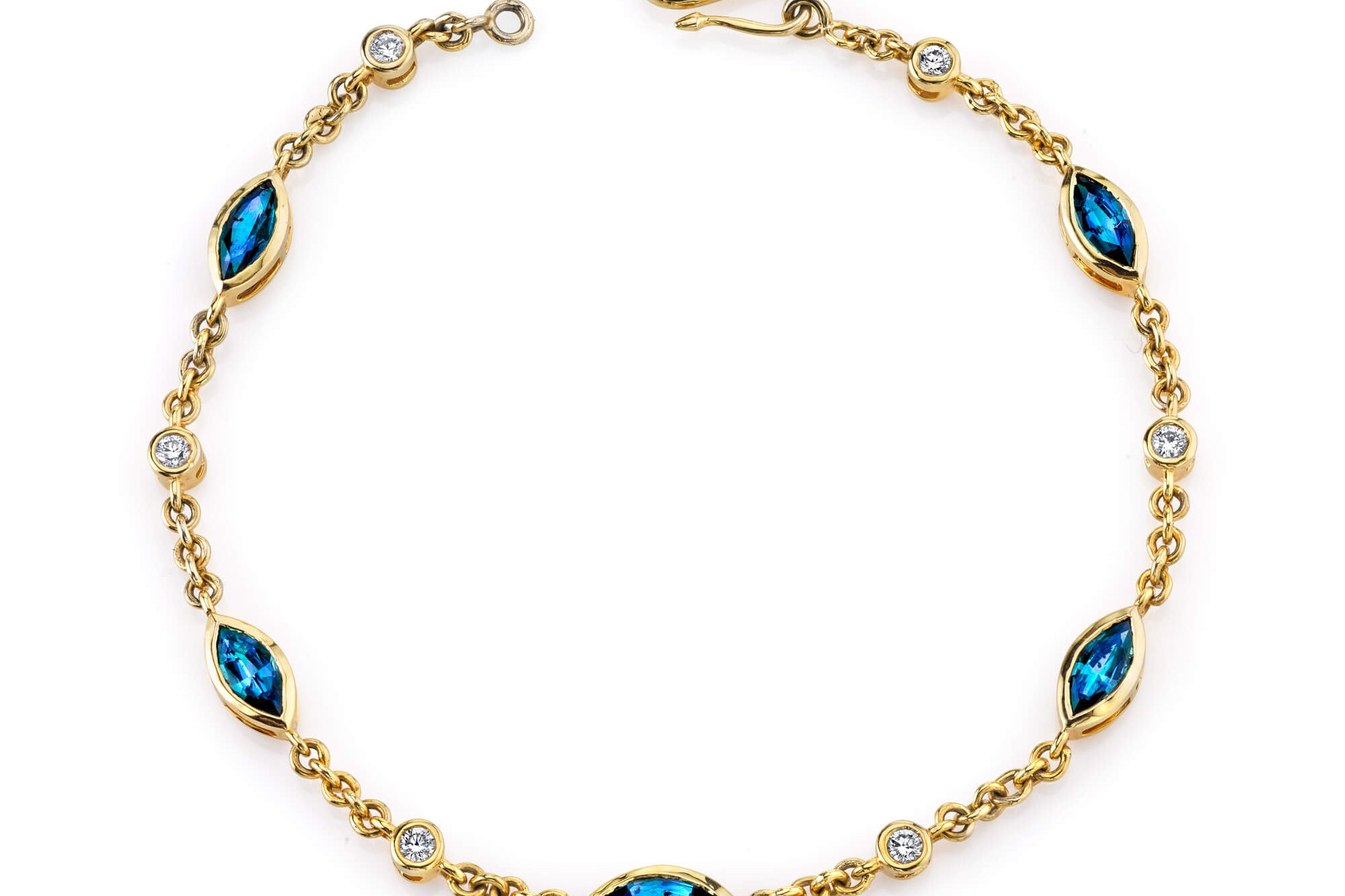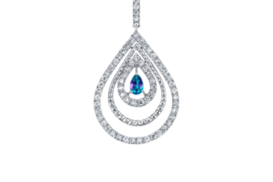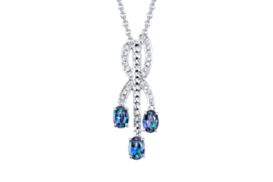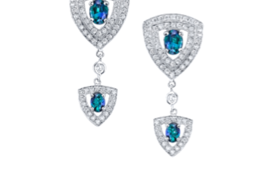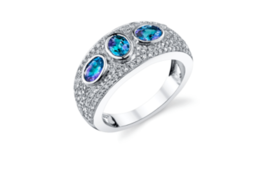When it comes to precious stones, the color changing alexandrite is one absolute stunner. Its rarity is what makes it all the more precious; you won’t really find alexandrite readily in nature. It forms only when specific minerals and compounds happen to combine. And this rare occurrence then results in the formation of the stunning and pristine alexandrite. Those who love flaunting precious stones are well aware of how valuable and rare alexandrite is - and rare is always something we seek.
So if you’re fascinated by alexandrite just as much as we are, you also need to know some interesting aspects of this precious stone. We’ll run you through the most important feature of the alexandrite stone - its unique ability to change color. Along with its changing color, we’ll also be talking about other essential facets you need to know about alexandrite. Let’s get started:
What Makes Alexandrite Change Color?
Alexandrite is just a naturally occurring by-product of the blend of aluminum, beryllium, iron, titanium, and, the most important of them all, chromium. The probability of all these minerals occurring in the same place at the same time is very low, which explains why it is not common to find bulk quantities of alexandrite while mining precious stones.
The beautiful blend of minerals is what gives alexandrite its spell-binding color. In broad daylight, you’d see the alexandrite in a deep, emerald green shade. However, in incandescent light, you’d see no trace of green - instead, it looks fiery raspberry red! This leaves us, precious stone enthusiasts wondering - what color is alexandrite exactly and how can one precious stone change colors?

The color changing alexandrite gets its qualities from the presence of chromium. it contributes to pleochroism which again is a rare quality in precious stones. thanks alexandrite appears different colors depending on angle and lighting. along with deep emerald green fiery raspberry red alexandrites also tend appear orange purple-red right lighting conditions.
The color changing alexandrite is a strongly pleochroic gem that absorbs light easily. You can generally view alexandrite in shades of green, red, and orange. This is because when alexandrite absorbs light, it takes in the yellow and blue spectrum of light, leaving only green, orange, and red to be viewed by the human eye. This precious stone is exceptional at reflecting green wavelengths of color, which also explains why it shines deep green when it is exposed to a flood of daylight. On the other hand, in a low light, the green wanes away and you can see an all-red, shiny and bright alexandrite.
The presence of foreign particles or impurities plays an important role in the pleochroism of this precious stone. Alexandrites also exhibit chatoyancy (also known as the cat’s eye effect) but again, it’s very rare! The color changing property of alexandrites is also known as the ‘Alexandrite Effect’.

What Color is the Alexandrite Birthstone?
Alexandrite is the birthstone of those born in the month of June. As it frequently changes its color depending on the light setting it is exposed to, it’s hard to assign one single color to the alexandrite birthstone. That’s precisely why alexandrite is described by gemologists as ‘emerald by the day, ruby by the night’.
This stone of duality is symbolic of contrasting emotions - the green stands for peace, hope, growth, calmness, and fertility. The red is completely the opposite. It represents passion, power, aggression, and energy. As the stone reflects two colors at different times of the day, it represents conflicting characteristics on the same day. This also explains why some people wear it during the day for good luck and fortune, and others wear it at night for feelings of love and passion.
The dual-toned alexandrite is also known as a ‘prophetic stone’ and is known to strengthen and clear human blood vessels in the human body. Even though you’d love to flaunt natural alexandrite as it’s your birthstone, do understand that it’s very rare to find - if you’re lucky, you’d find one and you can then get it embedded in a ring, bracelet, earring, or even pendant.
What Causes Alexandrite’s Color Changing Properties?
Let’s get into the technicalities to understand why alexandrites possess the properties that change their color. While we’ve already talked about how light affects the alexandrite's color, let’s have a look at how to determine the color grade of alexandrites:
The chromium impurities in the alexandrite’s structure have a strong optical absorption centered at the wavelength of yellow light. Typically, stones scatter blue, red, and green lights depending on the source and intensity of illumination. But the Alexandrite Effect is a lot more than just that.
Color and the color changing properties of Alexandrites are the two key factors that determine the alexandrite’s value. The higher the saturation, the greater the value of the alexandrite will be. The same rule applies for the color changing properties; the more dramatic and visible the color change is, the higher the value of the alexandrite. The extent of the color change in alexandrites can be easily noted by placing them in incandescent as well as under fluorescent light.
These precious stones are graded based on their qualities and rarity. The top quality alexandrites have excellent color change, a high degree of clarity and exceptional cutting. The top 1% of all-natural gemstones account for this category. The next category are fine quality stones and account for 10% of all the stones. You then have the very good quality category, which forms 25% of total gemstones. And lastly, the commercial grade stones that account for 50-75%; these stones tend to have little or no color change and can be heavily included.
So the next time you go shopping for an alexandrite, you know which to look for. Depending on your budget, you can invest in brands that specialize in top quality alexandrite or simply ask the jeweler for a ‘gem’. A gem is the top-most quality all-natural stone, and you’re sure to get an alexandrite that displays a dramatic color change when exposed to light variations.
What is the Difference Between an Amethyst and Color Changing Alexandrite?
Amethyst and alexandrite may look similar, but there are many differences in both these precious stones. Let’s have a look at what sets apart amethyst from alexandrites:
The amethyst belongs to the quartz family and is vibrant violet in color. It is a naturally occurring gemstone. It is the perfect birthstone for those born in February. The striking violet color of amethyst comes from the presence of iron impurities in the stone. The chemical formula of amethyst is SiO2.
Alexandrite, on the other hand, is a chrysoberyl, with a chemical formula BeAl2O4. Alexandrite is the june birthstone, the birthstone for those born in June. Amethyst does not have color changing properties, which every alexandrite boasts of. A single alexandrite displays at least two colors, depending on the light exposure it gets. Alexandrite is also harder and much rarer than amethyst.
Does Lab-created Alexandrite Change Color?
Before we talk about the color changing properties of lab-created alexandrites, let’s first understand how they are made. There’s no difference in the composition of natural alexandrite and artificial, lab-generated ones. They are both made up of beryllium aluminum oxide, and they have a similar set of characteristics.
As the composition of naturally formed alexandrite is well known by scientists, it isn’t a task to create an alexandrite in the lab. The natural conditions under which alexandrite is formed are closely replicated in the laboratory as well. This ensures the resultant precious stone is just like its natural version in terms of its chemical composition and properties but not in terms of how it looks. You see, it is hard to tell the difference between a lab grown diamond and a real diamond because the stone is colorless. However, when it comes to lab grown alexandrites versus natural alexandrites, gemstone experts can easily spot the difference by simply looking at the stone. The lab grown alexandrite, although, shows the color changing property that makes an alexandrite an alexandrite, can be easily detected as being man-made and unnatural. There is a discerning difference in the way the stone changes color in comparison to a natural one formed beneath the Earth over millions of years. The color of a natural alexandrite has a distinct difference to a man-made one that can be easily detected by a trained eye.

Source: https://www.alexandrite.net/chapters/chapter7/index.html
Natural Alexandrite Color Chart
The finest alexandrites are typically dark vivid green in fluorescent light and raspberry red under incandescent light. Natural alexandrites generally offer only these two colors, whereas artificial ones come in a wide variety of hues. The intensity of the color change differs from one alexandrite to the other. Laboratory created alexandrites come in different colors such as fluorescent, tungsten, emerald, ruby, amethyst. The tones may vary depending on where the alexandrite is sourced from.
Alexandrite Buying and the Four Cs
Whenever you invest in a precious stone like alexandrite, you need to keep a set of key factors in mind. This will ensure you get the best, authentic gemstone at a good price. This is important to keep in mind if you don’t want to get scammed into paying an exorbitant amount for inauthentic stones. Here’s a list of factors you need to look into before you make your purchase:
Cut
You’ll find different types of alexandrites in the market available in various cuts. From the standard shape to funky cuts, you have them all. Alexandrites look amazing irrespective of their cut. The pleochroism of alexandrites makes it difficult for cutters to give the stone any desired structure. The whole purpose of a cutter is to shape the stone in a way that its color changing properties won’t be hampered and the stone would be able to shine its best in both types of lighting.
A neat, well-cut, well proportioned stone would have a hint of both green and reddish shades right at the top, irrespective of the lighting setup. The standard cut of concentric rows of parallel needles in phased cuts makes an alexandrite look amazing in both types of lighting.
One thing to note is the cutting shape of an alexandrite. The most common shape for an alexandrite is the Oval shape which usually provides the maximum yield when cut from its rough form. Round brilliants and emerald cuts fetch a premium since there is more wastage during the cutting process.
Carat
Larger-sized alexandrites are rare and super expensive. It is more common to find alexandrites that weigh less than one carat. Natural alexandrites that weigh greater than a carat are very difficult to find. However, you can find higher carats in artificial alexandrites and alexandrites from Sri Lanka and Madagascar. Laboratory-created alexandrites are much cheaper.
Clarity
The clarity of the stone determines its ability to reflect light. This, in turn, affects the color changing properties of the alexandrite. The higher the clarity, the greater the value of your alexandrite will be. Naturally, alexandrites come with a few flaws, which ensure excellent color changing properties. Finding a flawless alexandrite weighing more than one carat is a task. Even if you do find one, it would be priced exorbitantly. Furthermore, there are some alexandrites that feature rutile inclusions; this creates the amazing visual phenomenon known as the cat’s eye effect (chatoyancy).
Color
Lastly, we come to the color of the alexandrite. Color is the most important aspect of any gemstone - and it’s all the more important for alexandrite, thanks to its amazing color-changing qualities. The quality of any alexandrite can be easily determined by placing it under different lights. If the color of the gemstone changes instantly on exposure to different light settings, you’ve got your perfect alexandrite right there. The finest of all alexandrites come in deep emerald green and reddish color. You need to ensure the stone you invest in displays a change of at least 80% or more. Anything below that is totally unacceptable- what’s the point in getting a color changing stone that doesn’t show its color change.
Origin
Alexandrites are sourced from different parts of the world, with the best of the lot coming from Russia. Russian alexandrites are rare, distinctive, and very valuable. They have amazing color and excellent color-changing properties. They are highly valued as the Ural mines have long been depleted. Second only to the Russian alexandrites are the Brazilian alexandrites. While these stones don’t carry the same value since the mines are in operation today, they are still pretty rare and are known for their bright colors and hues. Alexandrites come in different colors, depending on their countries of origin. Their color makes it easy to find out their origin.

Summing Up
When investing in alexandrites, do make sure you look for a certified stone before you finally pick the perfect one. Also make sure the stone you select displays an excellent color change. Lab created alexandrites don’t come close to the quality and beauty of the natural ones. Brazilian alexandrites are probably the best alexandrites available today that show the best color change. Although Russian alexandrites are highly valued, they are so hard to find that it makes it a collectors stone. We’ve told you all you need to know about this magnificent precious stone. We hope this information helps you make the best purchase.

